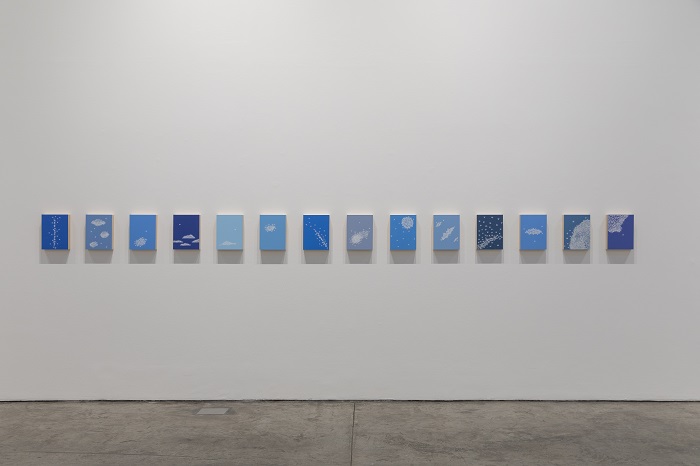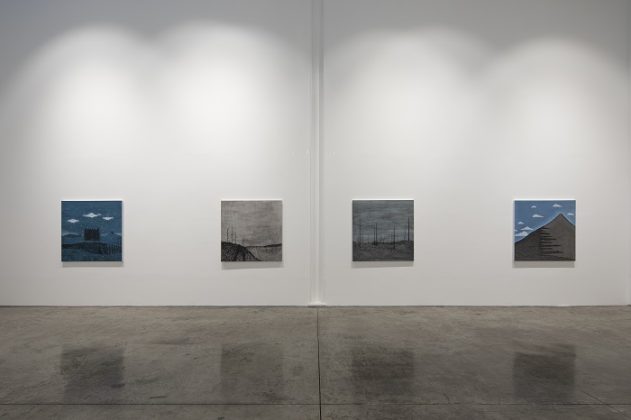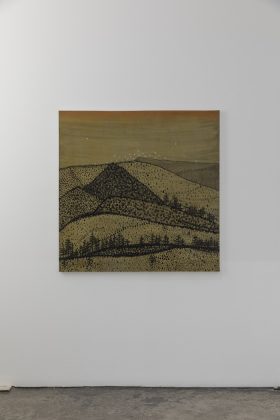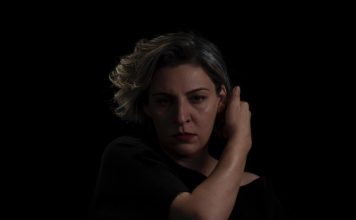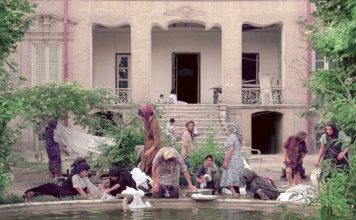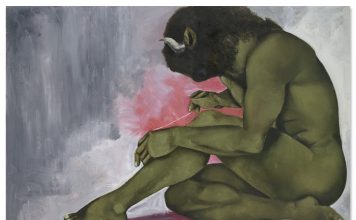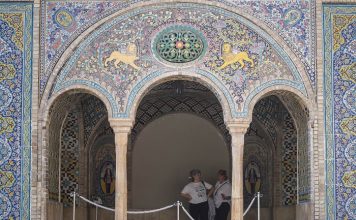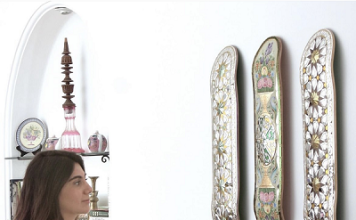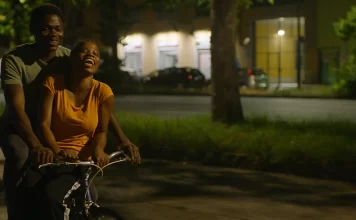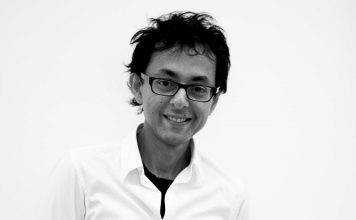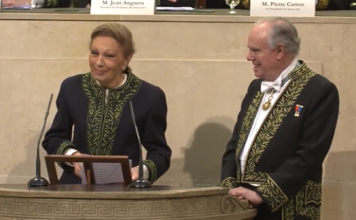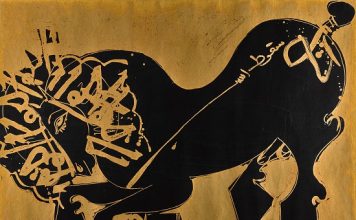By Rawaa Talass
The Iranian artist Pouran Jinchi — who lives and works in the Portuguese city of Porto — has a new show in Dubai in which she tackles themes of migration and climate change.
“Fly Like Dandelions,” at the Third Line Gallery in Dubai, features more than 20 paintings. Some are delicate portrayals of white dandelions, while others picture still and serene landscapes, punctuated with elements of calligraphy.
In a recent interview, Jinchi spoke to Kayhan Life about her childhood as an introvert, and the striking newspaper article that inspired her latest work.
Pouran, please tell us more about your background. How has your Iranian heritage influenced your art?
I was born and raised in Mashhad, in northeastern Iran. After high school, I went to university in the United States, and ended up not going back to Iran. I created a life for myself in the U.S.
I was always doing art on the side, but in the late 1980s and early 1990s, I decided that I needed to devote myself to my art and develop it the way I wanted to. That’s when I became a full-time artist.
In Iran, I trained as a calligrapher, and as a teenager, developed a huge interest in learning calligraphy. When I moved to the States, and tried to become a full fledged artist, I dabbled in different forms of art. None of them really felt real to me, so I decided, why not calligraphy?
How did your relationship with art begin?
As a child, I was an introvert. I was always in a corner drawing – that was my form of escape. Being a Middle Eastern child, you were always oriented towards being an engineer or a doctor, and that’s how my life was planned out. I got lucky, and was able to devote myself to my art form. Even now, as I get older, I still have opportunities to show my art. That’s something that really helps keep my spirit going.
The paintings in your new Dubai exhibition, “Fly like Dandelions,” were sparked by an article that you read in The New York Times. Tell us more about that.
The article was about a Guatemalan farmer who couldn’t farm because there was a drought. There was no rain. If farmers can’t work on their farm, they can’t make a living, they can’t survive. He kept hoping for rain, and finally the rain came – but in such a harsh way that it wiped out everything on the land. He lost his chance to farm, and was forced to migrate.
My series actually started some years ago, when I was doing research on different types of weeds, and what they meant. I noticed a very similar language used to describe weeds and migrants. All of those words were very negative and invasive. That really sparked my interest in the dandelion, which I call a flower [rather than a weed.]
Later, when I read the story about the Guatemalan farmer in The New York Times, it hit me that I wanted to explore a series portraying isolated landscapes that had a glimmer of hope. I wanted to create an image of how migration happens.
When migration happens, you pass through a lot of different landscapes to get to your destination, and these are all just imaginary landscapes.
The trees and mountains in the paintings are so detailed. Can you explain your artistic process?
Because ink is very diluted, I had to use many layers of ink to create that intensity of color. I wanted to choose colors that indicated a dystopian concept. That’s the reason why you see a lot of greys and blacks, because I needed this series to indicate that sense of urgency and desperation. But my goal was never to be preachy.
My work is always layered, but quiet. I usually don’t say too much, because I like the viewer to take what she or he wants to take from it.
Physically, the paintings are very difficult to produce. I work with ink, which drips. You can’t really put it on an easel or against the wall. You either have to do it on the floor or on a table, where you physically need to bend, because there are also some larger paintings.
If you look at certain areas of the paintings, I use the Persian word for tree, ‘derakht,’ to draw the trees. The calligraphy is used in creating the composition of a tree.
“Fly Like Dandelions” is on view at The Third Line gallery in Dubai through Feb. 16.

